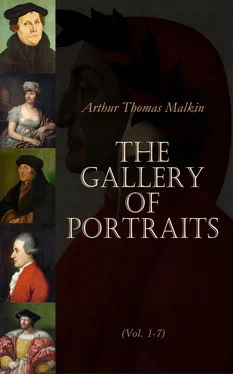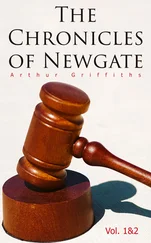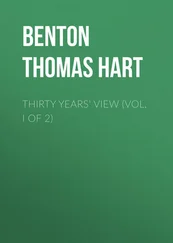Not content with his own sphere of greatness, he aspired to the minor praise of being skilled in the fashionable literature of the day; and amused himself by composing dramatic pieces, some of which Corneille was employed to correct. The independence of the poet, and the pride of the patron, led to a quarrel of which we have given some account in the life of the great tragedian. In 1635 Richelieu founded the French Academy. We should expect to find in his political writings traces of the master-hand of one, who, with a mind of unusual power, had long studied the subject of which he wrote. But those which are ascribed to him, for none, we believe are avowed, or absolutely known to be his, are of unequal merit. The ‘Mémoires de la Mère, et du Fils,’ are mediocre, and unworthy of him. The ‘Testament Politique du Cardinal de Richelieu’ (the authenticity of which is strongly contested by Voltaire) bears a much higher reputation as a work upon Government. La Bruyere has said of it, that the man who had done such things ought never to have written, or to have written in the style in which it is written.
There are several English lives of Cardinal Richelieu, most of them published in the seventeenth century, but none which we know to be of authority. In French, we may recommend the reader to the life of Aubery. The best account of Richelieu, however, is said to be contained in the ‘Histoire de Louis XIII.’ by P. Griffet.
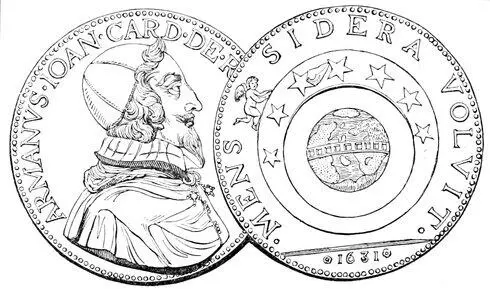

Engraved by W. Holl. J. H. WOLLASTON. From the original Picture by J. Jackson in the possession of the Royal Society. Under the Superintendance of the Society for the Diffusion of Useful Knowledge. London, Published by Charles Knight, Pall Mall East.
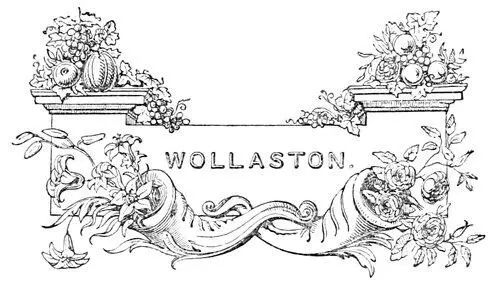
Table of Contents
No record of this eminent philosopher has yet appeared, except his scientific papers, and a few meagre biographical sketches published shortly after his death. It is to be hoped that some one duly qualified for the task will become the historian of his life and labours before it is too late.
William Hyde Wollaston was born August 6, 1766. His grandfather was well known as the author of a work, entitled ‘The Religion of Nature Delineated.’ He completed his education at Caius College, Cambridge. It has been said, in most of the memoirs of him, that he obtained the honour of being senior wrangler. This is a mistake, arising from Francis Wollaston, of Sidney, having gained the first place in 1783. It appears from the Cantabrigienses Graduati that he did not graduate in Arts; but, with a view to practising medicine, proceeded to the degrees of M.B. in 1787, and M.D. in 1793. He was not unversed, however, in mathematical studies. He first established himself as a physician at Bury St. Edmunds, in Suffolk; but meeting with little encouragement, removed to London. Soon after this change of abode, he became a candidate for the office of physician to St. George’s Hospital, in opposition to Dr. Pemberton. The latter was elected, and Wollaston, in a fit of pique, declared that he would abandon the profession, and never more write a prescription, were it for his own father.
He kept to his resolution, hasty and unwise as it may seem; and from this time forward devoted himself solely to the cultivation of science. Even in an economical view he had no cause to regret this, for he acquired wealth by the exercise of his inventive genius. One single discovery, that of a method by which platinum can be made ductile and malleable, is said to have produced him about thirty thousand pounds. It has been objected that he derogated from the dignity of the philosophic character by too keen an eye towards making his experiments profitable: but in this field, if in any, the labourer is surely worthy of his reward; and unless it can be shown that he turned away from any train of discovery, because it did not promise pecuniary gain, surely not a shadow of blame can be attached to him for profiting by the legitimate earnings of his industry and talents. That he was fond of acquiring money, there is good reason to believe; but there is a story, which has been before told, and which we have ourselves some reason to consider authentic, which proves that he could use nobly that which he had gained frugally. A gentleman, in embarrassed circumstances, requested his interference to procure some place under government. He replied, “I have lived to sixty without asking a single favour from men in office, and it is not, after that age, that I shall be induced to do it, were it even to serve a brother. If the enclosed can be of any use to you, in your present difficulties, pray accept it; for it is much at your service.” The enclosure was a cheque for ten thousand pounds.
One of Wollaston’s peculiarities was an exceeding jealousy of any person entering his laboratory. “Do you see that furnace?” he once said to a friend, who had penetrated unbidden to this sacred ground. “Yes.” “Then make a profound bow to it, for this is the first, and will be the last time of your seeing it.” It is not a necessary inference, that this dislike to having his processes observed arose from jealousy either of his fame or his profit: it may have been merely the result of a somewhat saturnine and reserved temper, which seems to have shunned unnecessary publicity on all occasions.
Wollaston was elected a Fellow of the Royal Society in 1793. He was appointed one of its Secretaries, November 6, 1806. His first paper, which is on medical subjects, is published in the Philosophical Transactions for 1797; and, until his death, he continued to be a frequent contributor. His papers amount in number to thirty-nine, and must be well examined before a just idea can be formed of the extent and variety of his scientific knowledge. They embrace various subjects connected with Pathology, Optics, Electricity, Chemistry, Crystallography, and mechanical contrivances of various sorts. He contributed a few papers to other philosophical works. Of the Geological Society he was an active member, though he sent no memoirs to its Transactions; and on the first annual meeting of that body after his death, the president, Dr. Fitton, bore testimony to the high value of his services to the science of Geology.
The lives of Wollaston and Davy began and ended nearly at the same time, and ran parallel to each other; they never crossed. Each was original, and independent of the other; their minds were unlike, their processes different, and the discoveries of one never interfered with those of the other. “The chemical manipulations of Wollaston and Davy,” we quote from Dr. Paris, “offered a singular contrast to each other, and might be considered as highly characteristic of the temperaments and intellectual qualities of these remarkable men. Every process of the former was regulated with the most scrupulous regard to microscopic accuracy, and conducted with the utmost neatness of detail. It has been already stated with what turbulence and apparent confusion the experiments of the latter were conducted; and yet each was equally excellent in his own style; and as artists, they have not unaptly been compared to Teniers and Michael Angelo. By long discipline, Wollaston acquired such power in commanding and fixing his attention upon minute objects, that he was able to recognize resemblances, and to distinguish differences, between precipitates produced by re-agents, which were invisible to ordinary observers, and which enabled him to submit to analysis the smallest particle of matter with success. Davy on the other hand obtained his results by an intellectual process, which may be said to have consisted in the extreme rapidity with which he seized upon, and applied, appropriate means at appropriate moments.
Читать дальше
